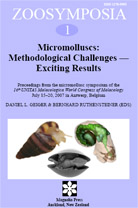Abstract
The Western Ghats, India, is one of the 34 hotspots of biological diversity in India and harbour high levels of endemism in a variety of taxa. Research on the faunistic diversity of this hotspot have focused on higher taxa such as mammals and birds and lesser taxa such as land snails have not been studied. Given the rapid land transformation occurring in the Western Ghats, there is an urgent need to study the impact of land use change on poorly known taxa such as land snails. The fi rst attempt was made here to assess the distribution patterns of the land snails of the Western Ghats in relation to land use and habitat disturbances. We assessed geographical distribution patterns of microgastropods along the Western Ghats on the basis of published literature and data from fi eld studies and the impact of land use change and habitat disturbance on microgastropods in the wet forests of the central Western Ghats: a) approximately 40% of the total 269 species of land snails recorded from the Western Ghats were microgastropods, b) the southern Western Ghats harbours high species richness for both micromolluscs as well as macromolluscs compared to the central and northern Western Ghats, c) micromolluscs occur in very high densities compared to macrospecies and d) land use changes and habitat disturbances has led to 10% increase in macrogastropods over microgastropods. The present study clearly shows that land transformation and disturbance has had a severe impact on land snail diversity. Little effort is currently made in India to include lesser known taxa such as land snails in conservation programmes. This is mainly due to our lack of knowledge on the diversity and ecology of this cryptic group. There is, therefore, an urgent need to study the distribution and landscape ecology of land snails to ensure their effective conservation.

